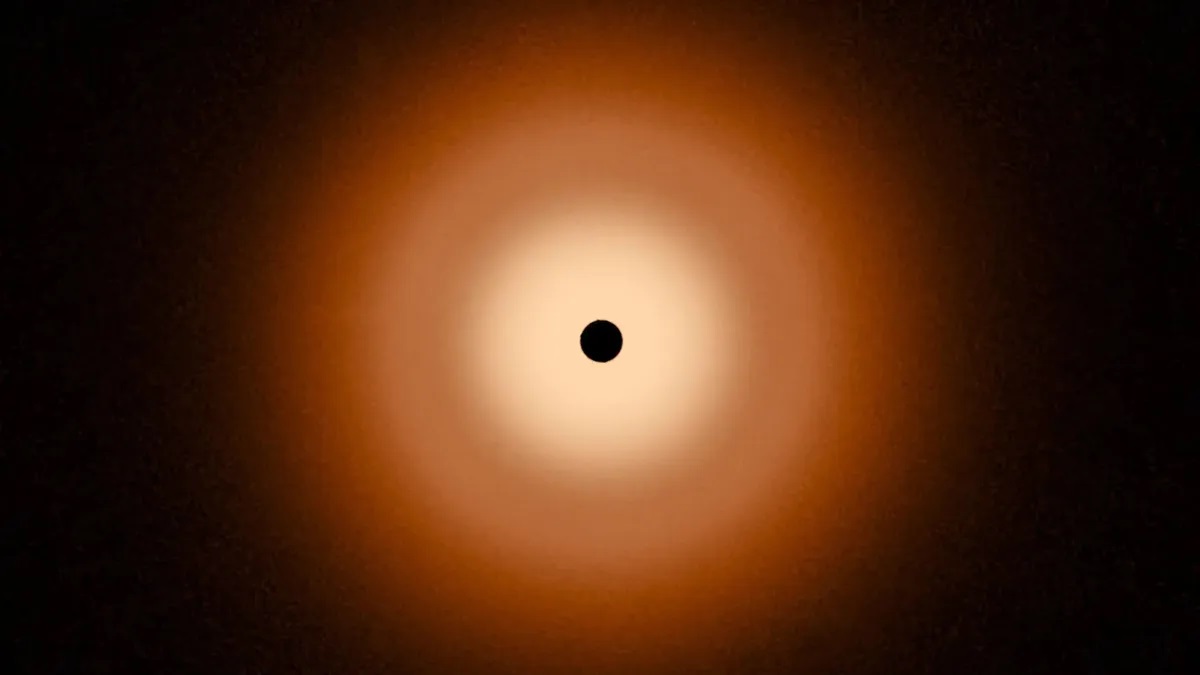(NLDO) - Just 25 light years from Earth, what is surrounding Vega could overturn understanding of how alien worlds form.
The James Webb Space Telescope has captured an unusually smooth disk of cosmic debris around Vega, a blue supergiant star, the brightest in the constellation Lyra.
It is a large protoplanetary disk, similar to the protoplanetary disk of the early Solar System, where Earth and the other planets formed.
However, Vega's protoplanetary disk has features that scientists describe as "inexplicable."

Surrounding Vega is an absurdly smooth protoplanetary disk - Graphic: UNIVERSITY OF ARIZONA
A research team from the University of Arizona's Steward Observatory - Lunar and Planetary Science Institute, the Space Science Institute, NASA's Jet Propulsion Laboratory (USA) and Trinity College Dublin (Ireland) studied the strange structure.
Protoplanetary disks should have gaps where gas and dust coalesced into planets.
But according to Dr. Andras Gáspár from the University of Arizona, Vega's disk is strangely smooth, suggesting that no planets exist around it.
There is a small faint band about 60 astronomical units (AU) away from the star, 1 AU being the Sun-Earth distance.
However, upon closer inspection, it was simply the result of some dusty rocks being blown further away by radiation, not a gestating planet.
Vega is much younger than the Sun—it's only about 455 million years old—but it's still old enough to have spawned planets. Our Earth, for example, is estimated to be less than 10 million years younger than the Sun.
If we compare Vega with Fomalhaut, a slightly younger star, the absurdity of the smooth disk becomes even more apparent.
Fomalhaut is a perfect analogue of Vega, also a superluminous blue-white star, with a large gap in its protoplanetary disk suggesting that a giant planet or several small planets have been born.
Researchers cannot explain why Vega cannot produce exoplanets while Fomalhaut apparently can, although the same physical mechanisms are thought to coexist in both star systems.
Researchers have proposed many scenarios, but none of them explain why Vega could not have given birth to a planet.
The researchers also wondered whether more such ultra-smooth, non-exoplanet-forming disks could be found in the universe.
If they are common, calculations regarding the number of planets that can exist in the galaxy or in the universe could be profoundly changed.
"This makes us rethink the range and diversity among exoplanetary systems," concluded Dr. Kate Su from the University of Arizona.
Source: https://nld.com.vn/cau-truc-hinh-dia-khong-giai-explanation-duoc-hien-ra-tu-sao-chuc-nu-19624110811243433.htm







































































































Comment (0)